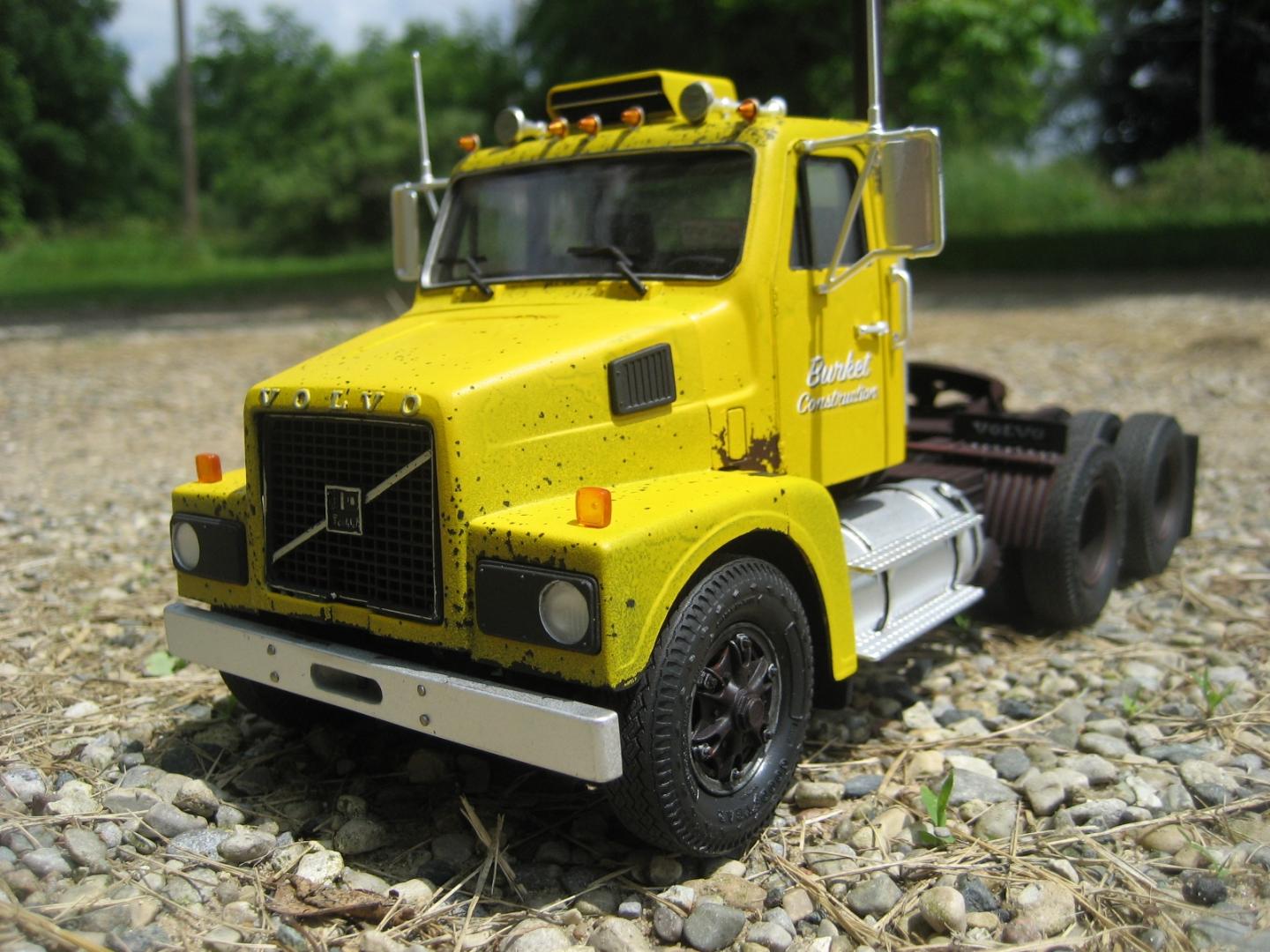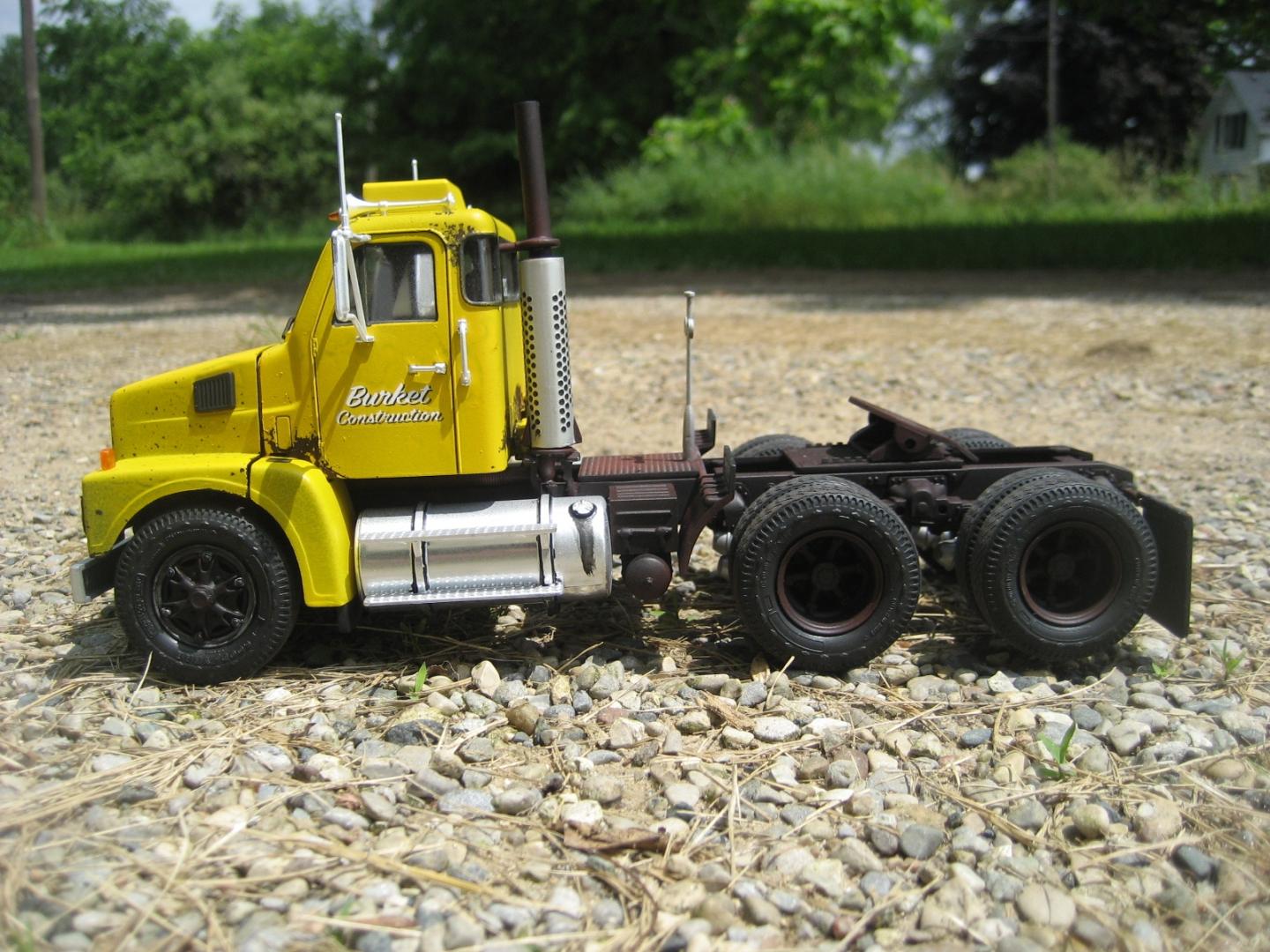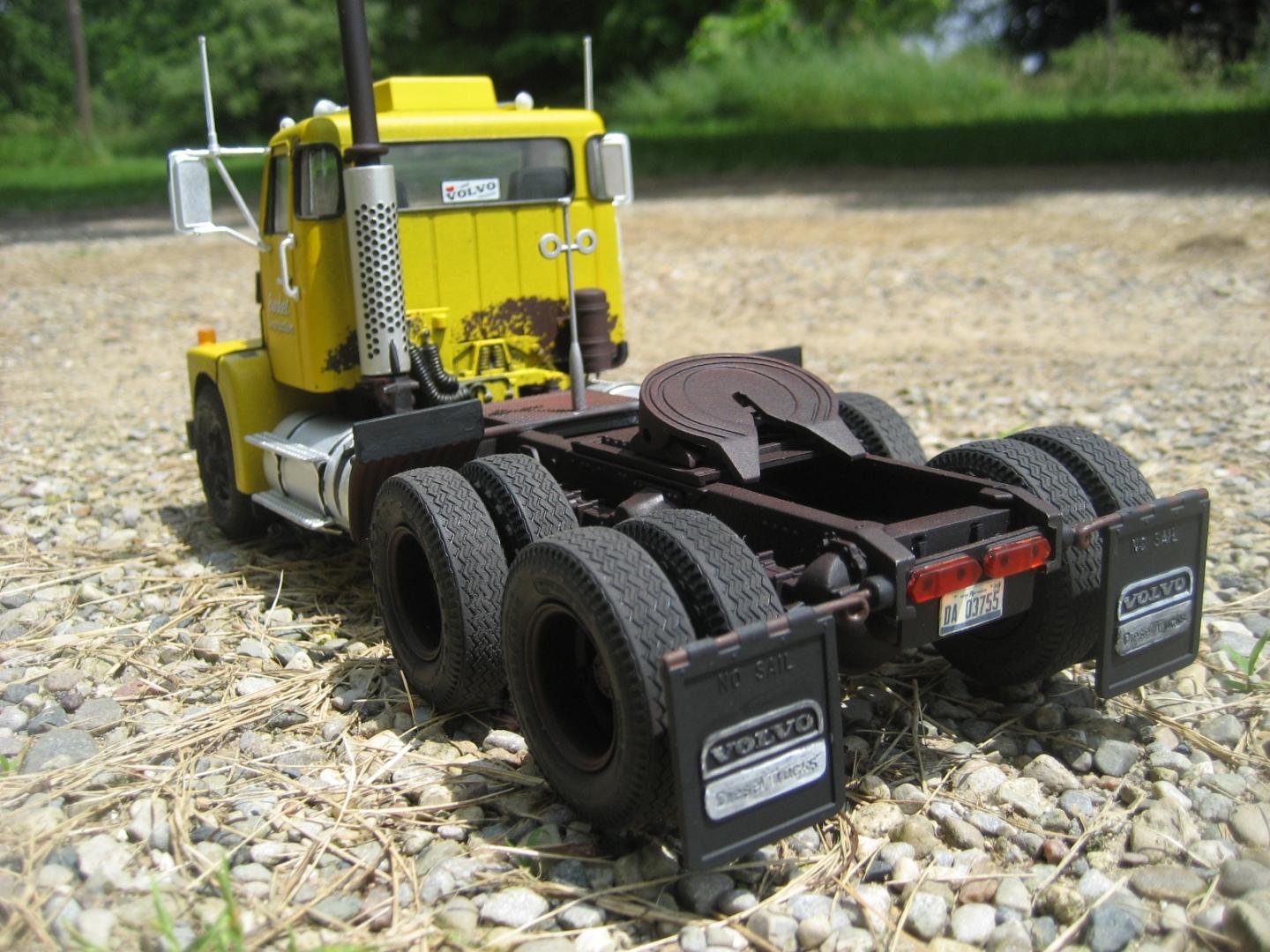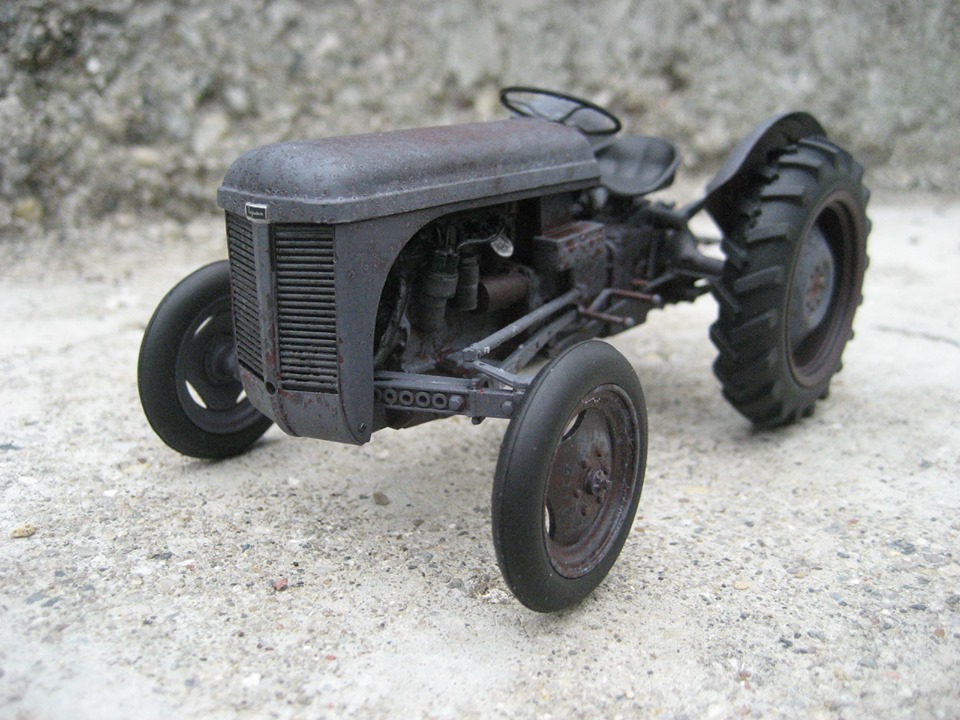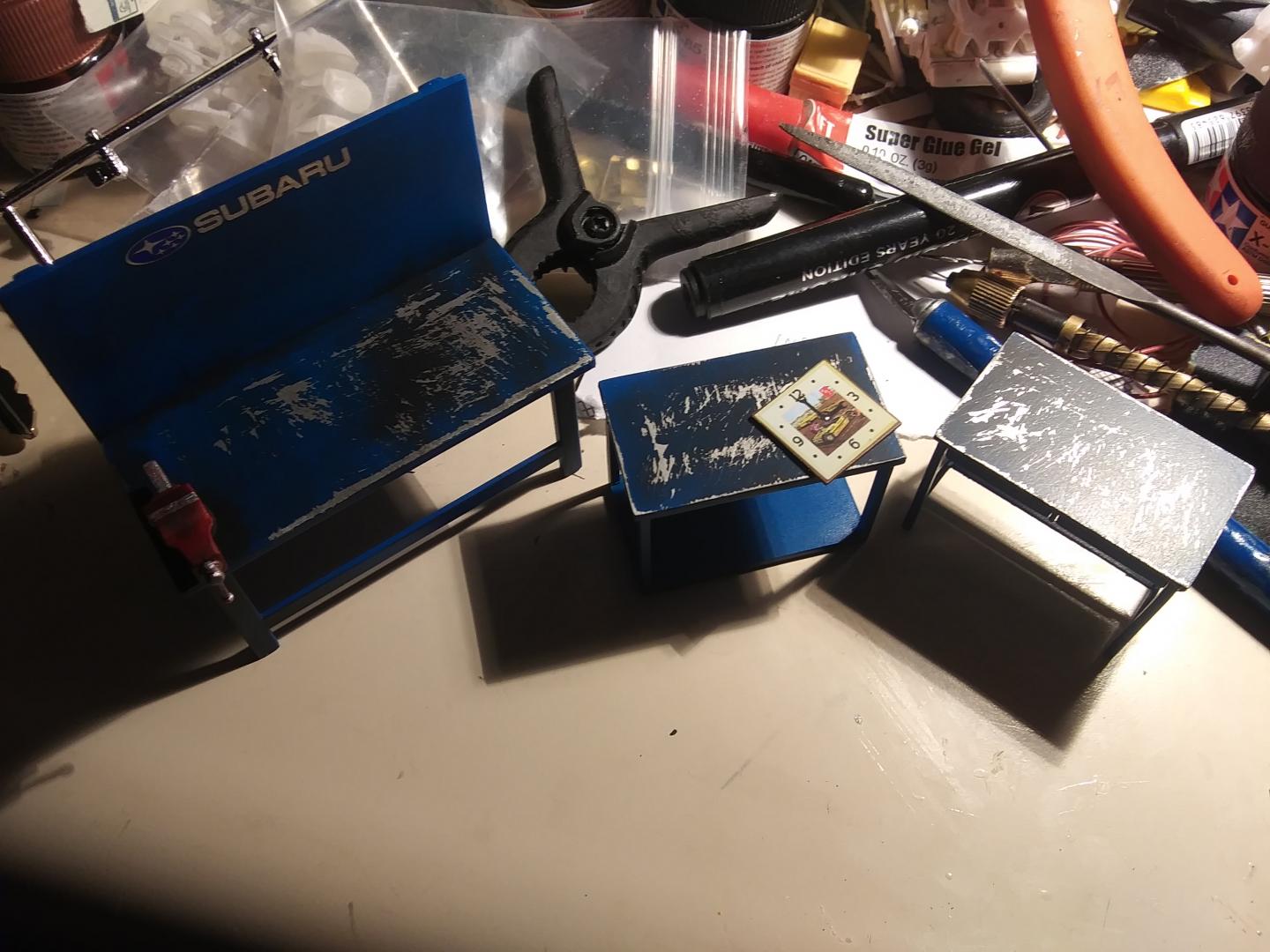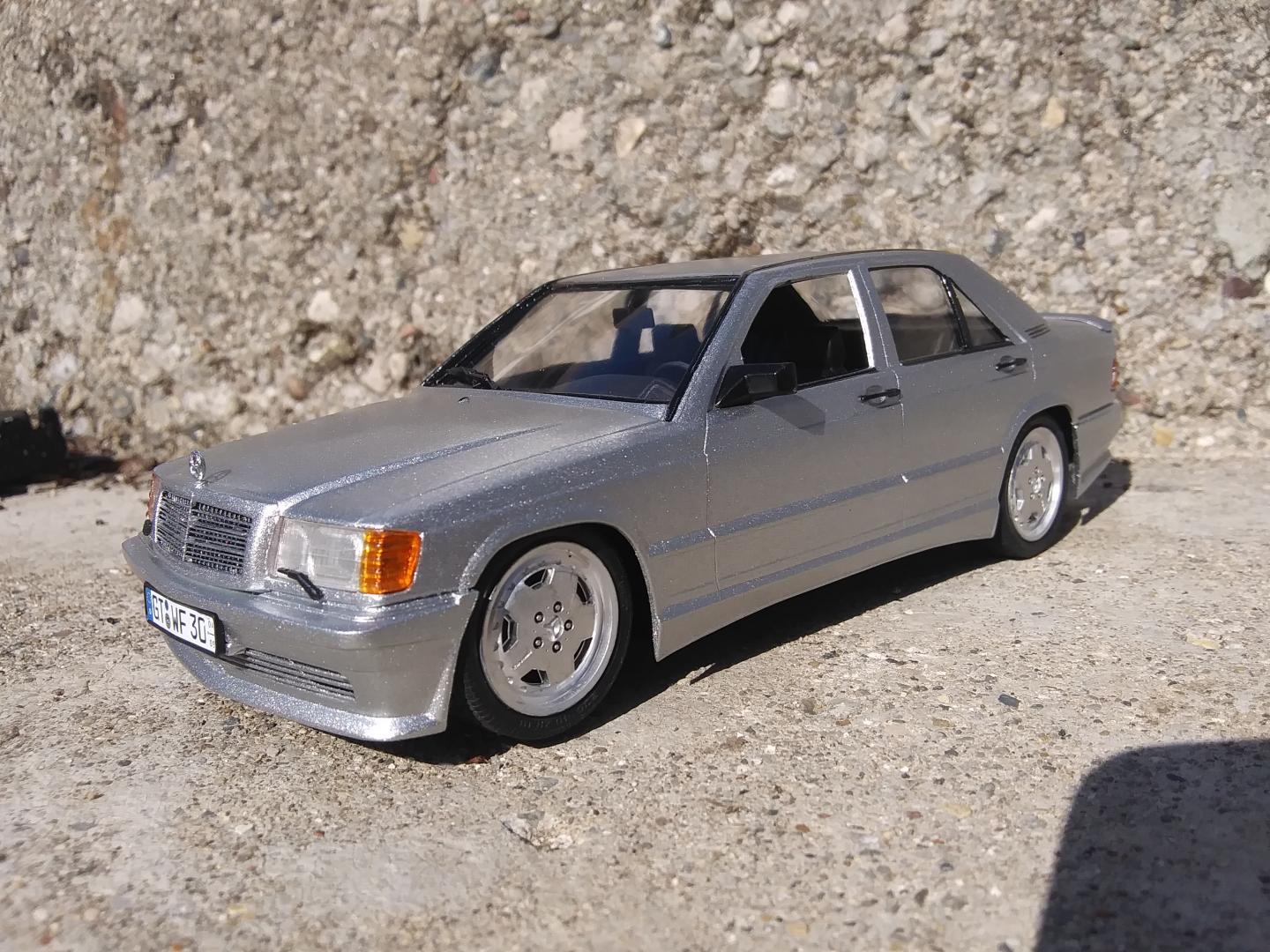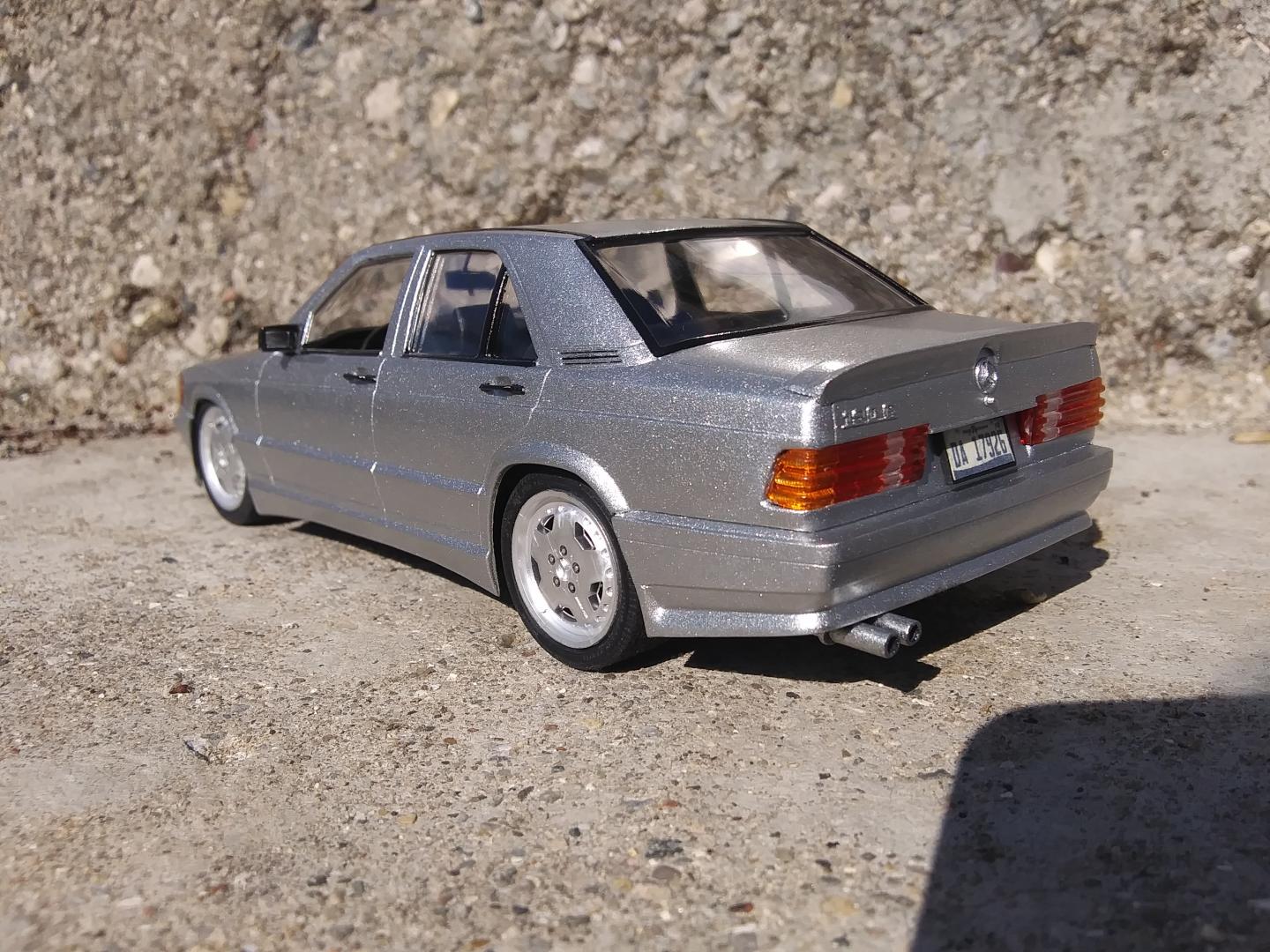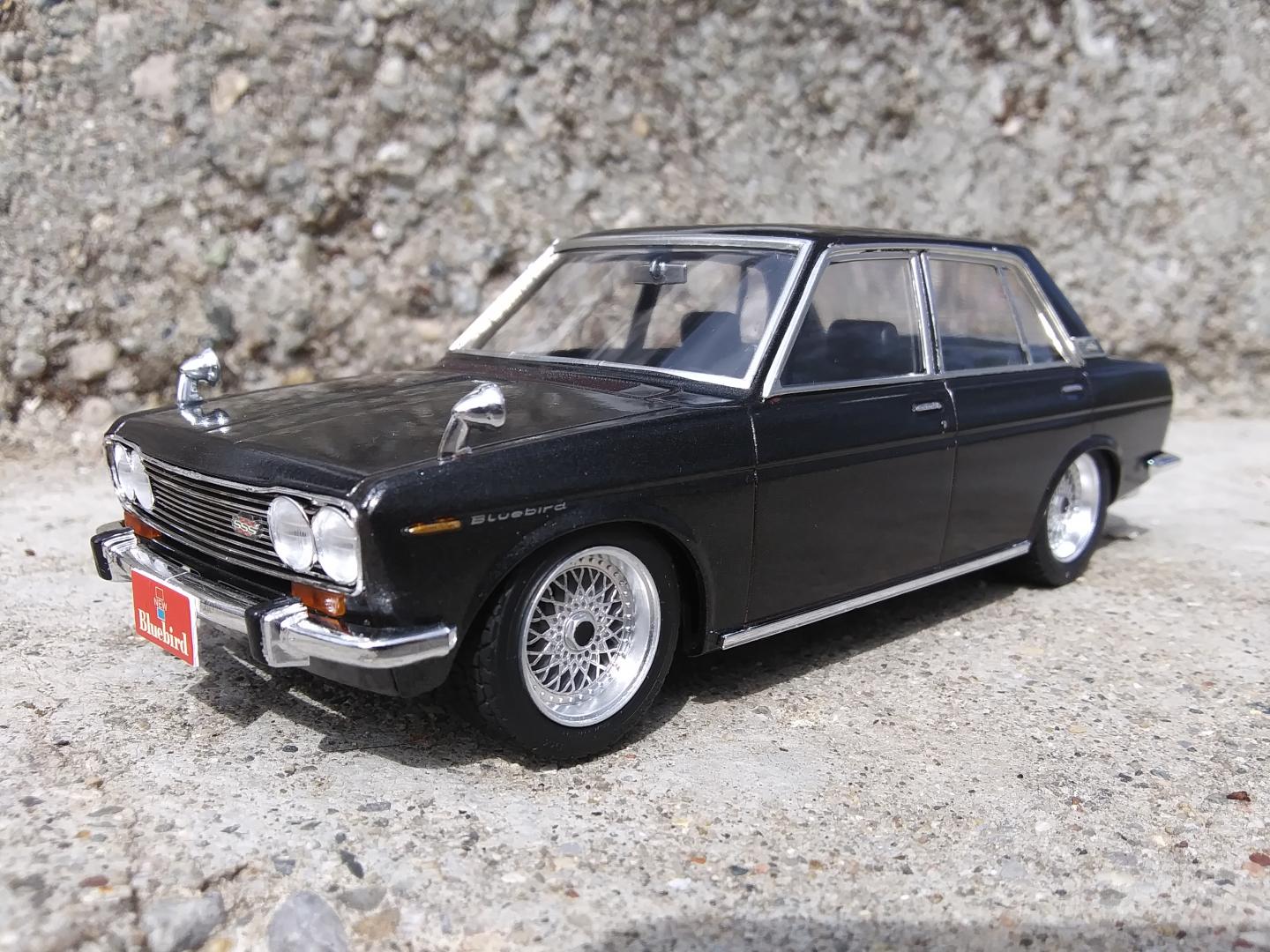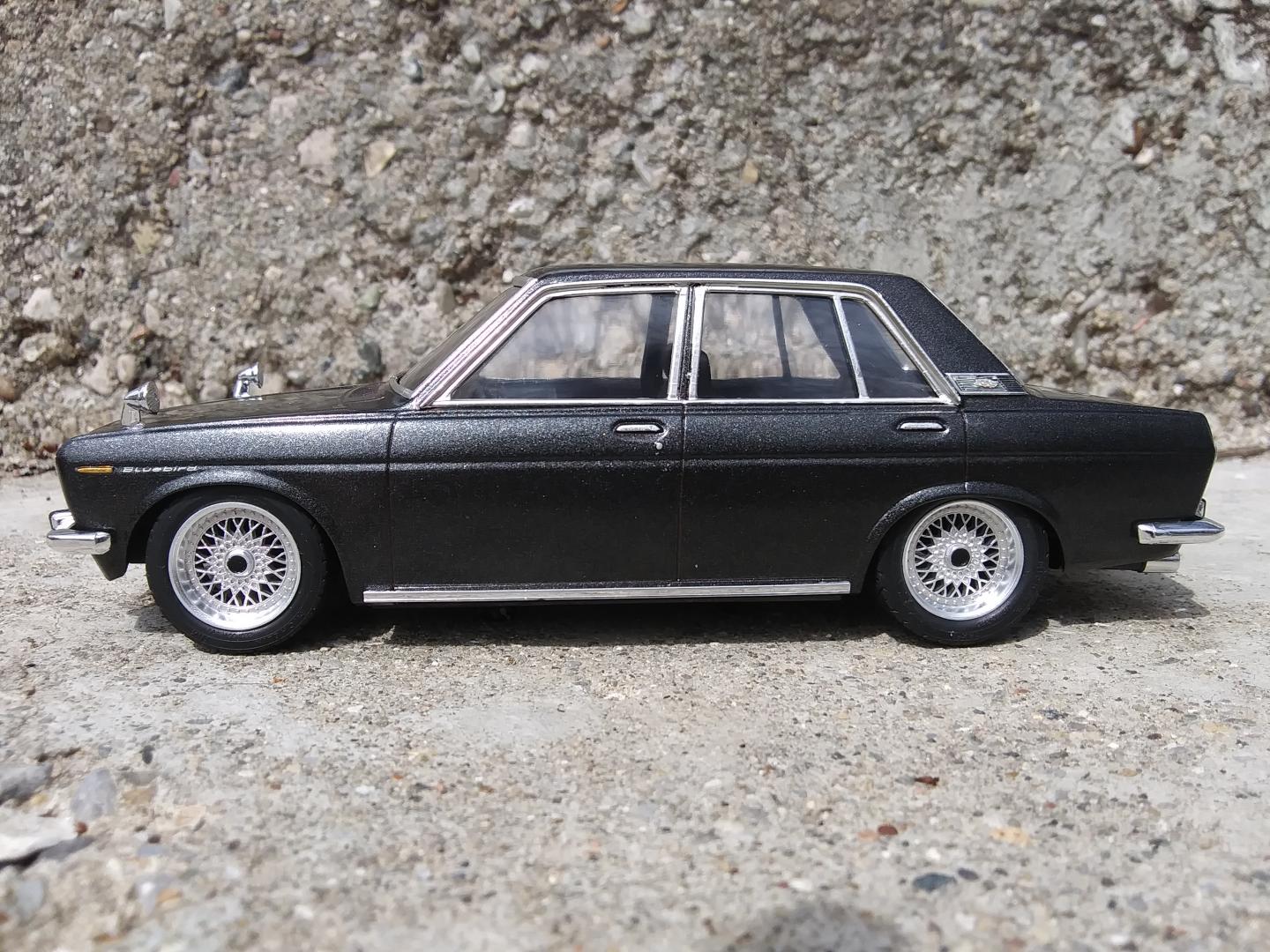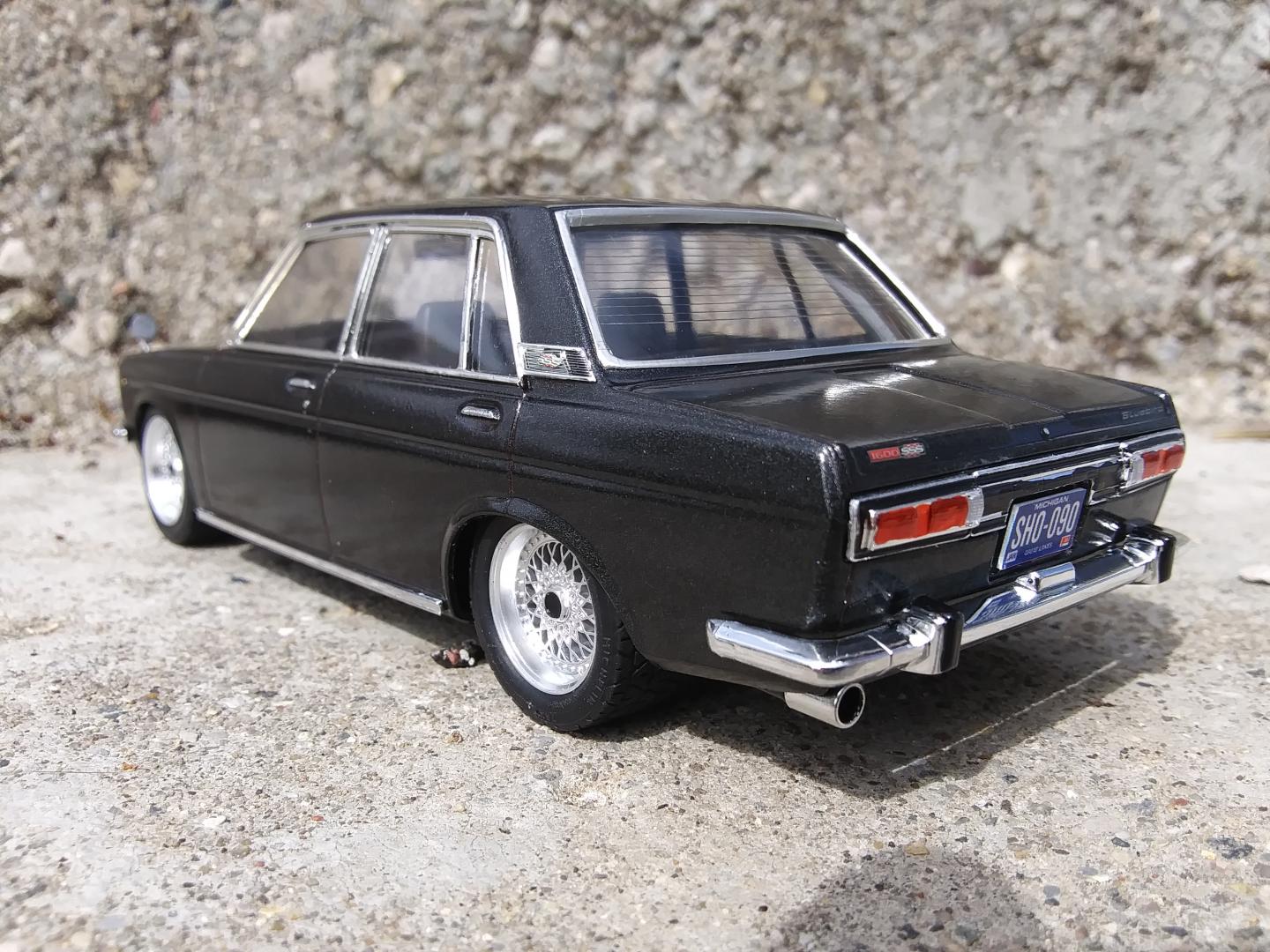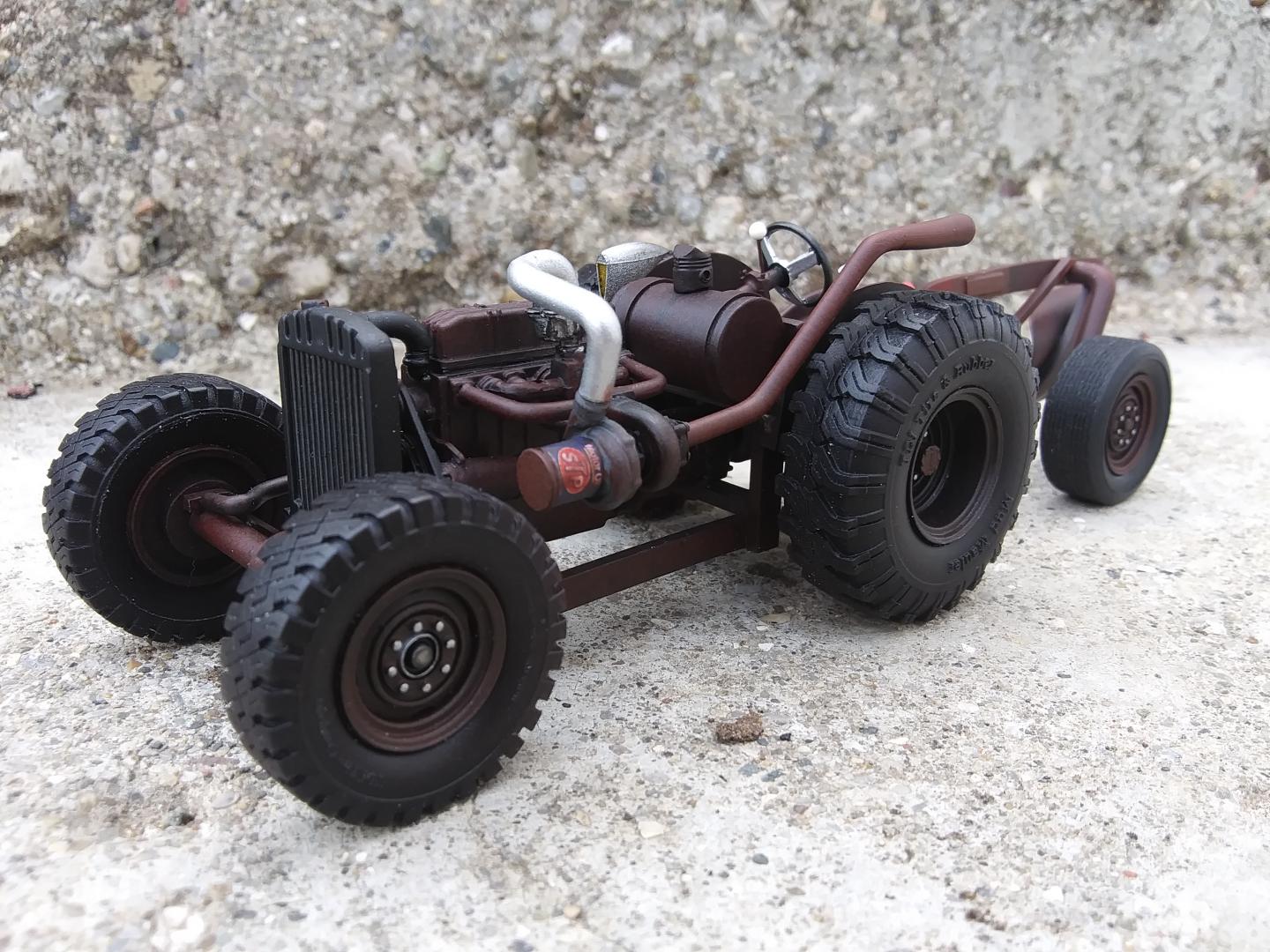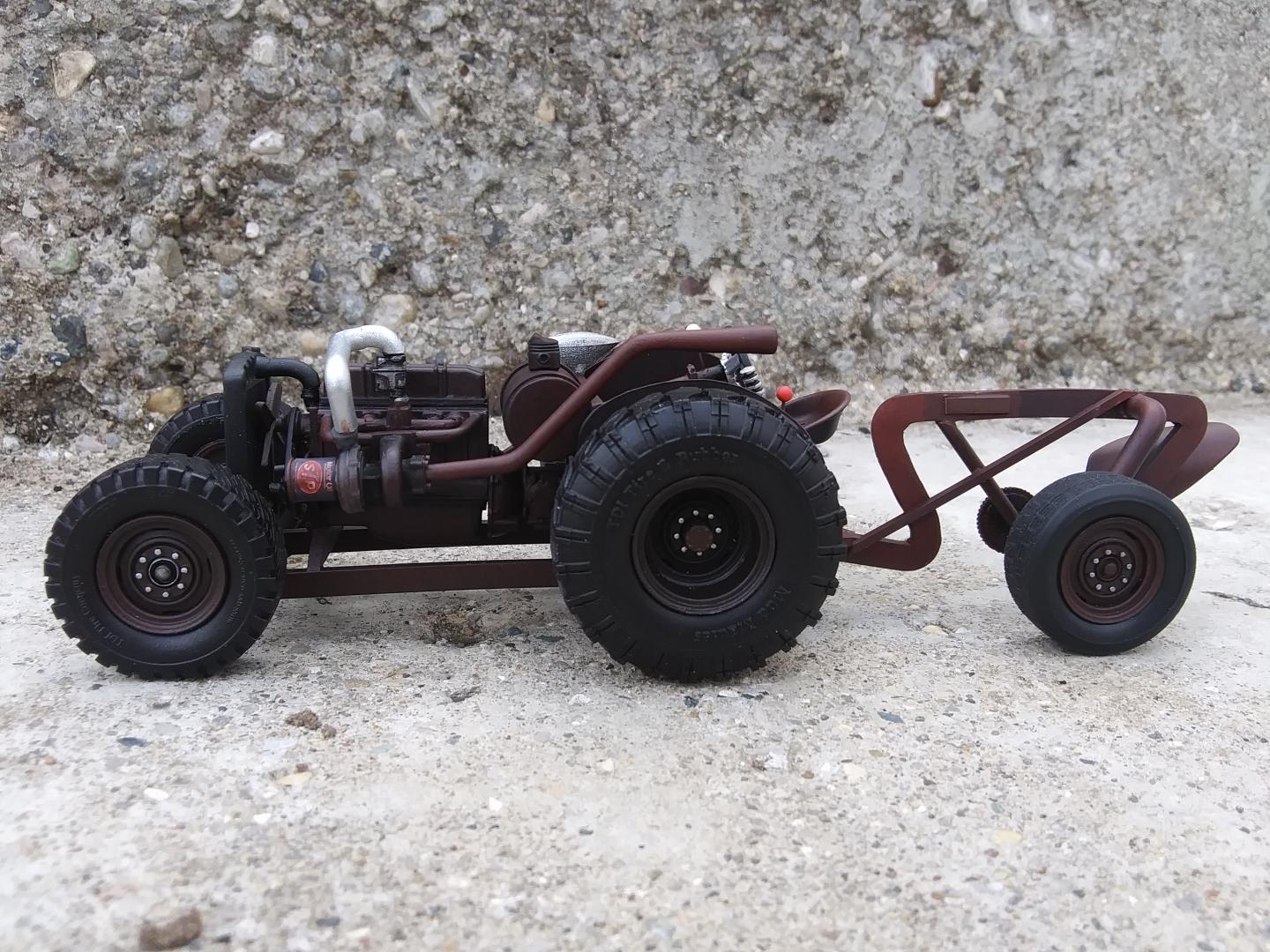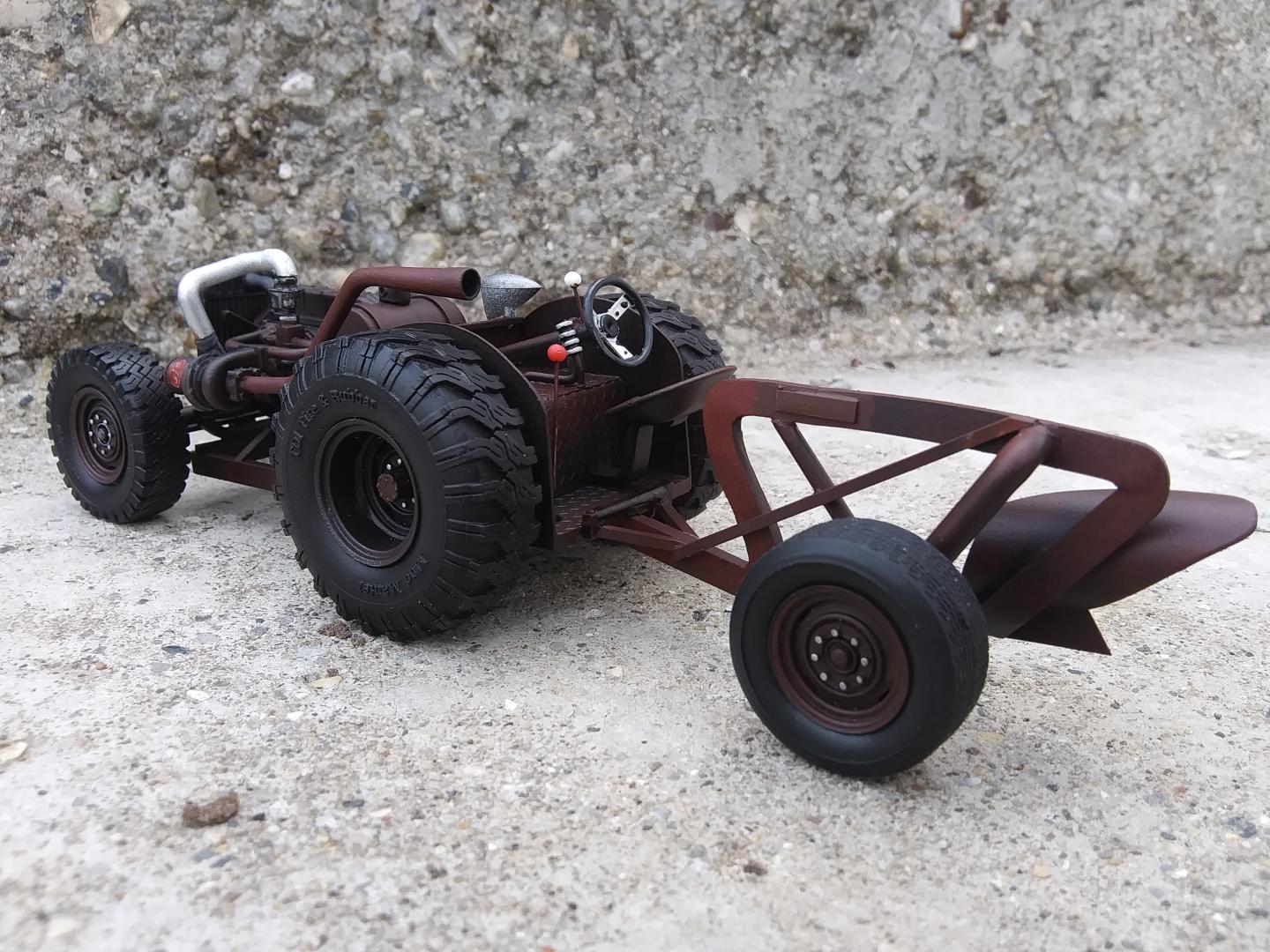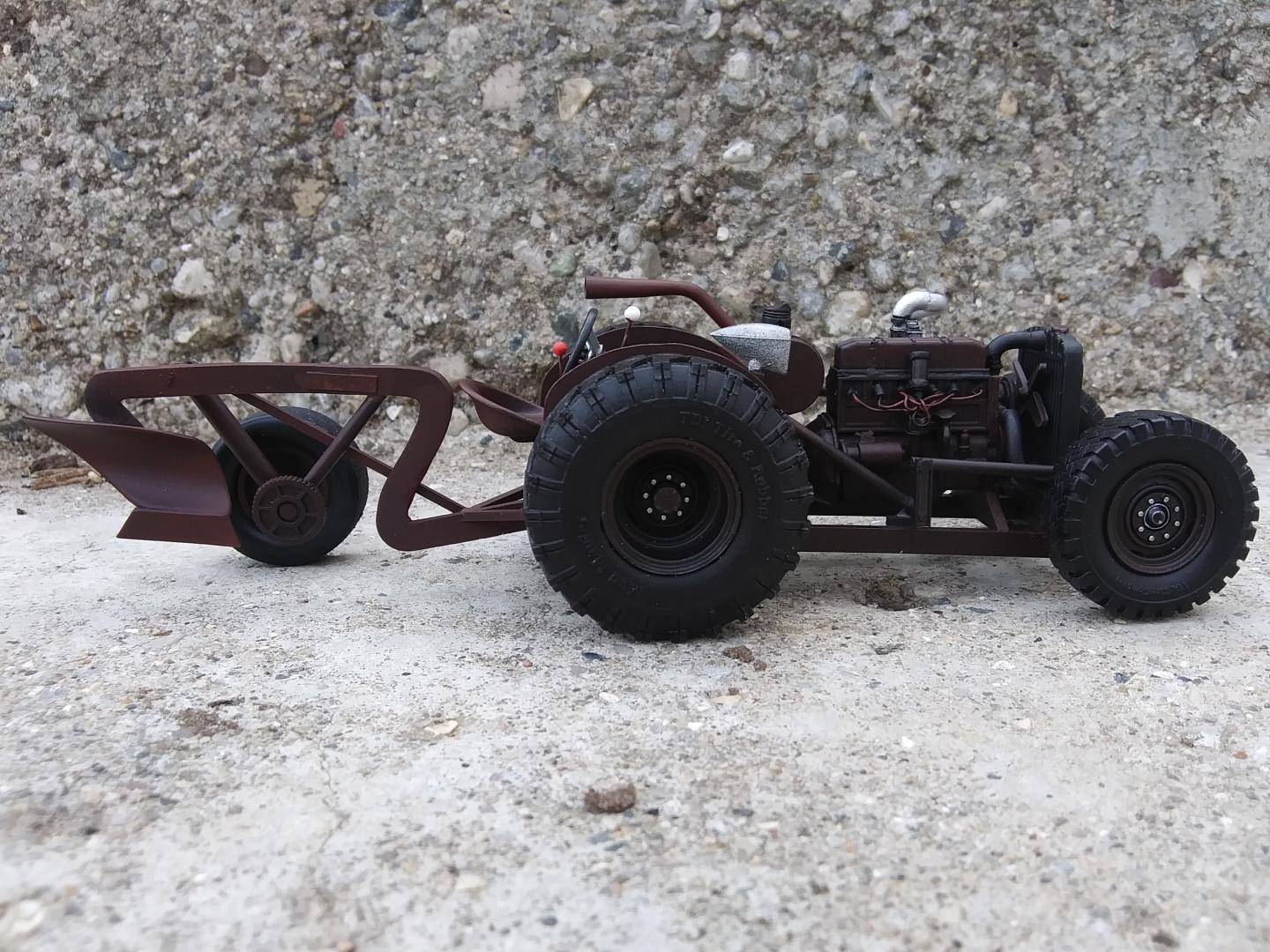
Chuck Most
Members-
Posts
12,888 -
Joined
-
Last visited
Content Type
Profiles
Forums
Events
Gallery
Everything posted by Chuck Most
-
In short, it's the old Ertl kit built box stock other than the air conditioner, aluminum smokestack, and decals. I also made new spindles as the diecast parts in the hit refused to cooperate with me.
-
When AMT reissued the BRAT, I naturally had to nab four of them right away. Molding quality was decent, except for one kit, which had a pretty badly warped body. So I opted to have a little fun with that one and did it as a long-suffering but now-retired veterinary vehicle. Other than the decals, which were printed onto Micro-Mark carrier, it's box stock.
-
1966 Ford F250 Service Truck
Chuck Most replied to Chuck Most's topic in Model Trucks: Pickups, Vans, SUVs, Light Commercial
Don't know how I forgot that when I still have two of the two piece wheels from Dad's '66. ? -
This is, of course, the Moebius '65 kit. I swapped the grille for a '66, and swapped in the straight six and three speed from that kit as well just for kicks. I visually converted it to a 3/4 ton with Scenes Unlimited wheels. I also used Scenes Unlimited mud and snow tires on the back. The front hubcaps are in the kit, and were used to complete the 3/4 ton visual conversion. even though they're one generation too new for a '66. My dad's old '66 had a set of C8UA-1130-A caps added later, so it was something that could have happened if the original caps were lost. The "Ted Nelson Plumbing and Heating" graphics are taken from one of Tom Servo's jokes on the MST3K episode highlighting The Incredible Melting Man. I also used a 1977 Michigan tag as a nod to the year of that movie's release. I also threw together a ladder rack from 2mm styrene strip just for fun.
-
These were built from the Moebius kit- the "business coupe" from the stock Belvedere I, and the street machine began as the Butch Leal drag car before the stock Belvedere came out. I prefer the stock kit- not only can it be built stock (naturally), but Moebius modified the molds and the door and trunk lines are much deeper and better defined! The business coupe was done up as a delivery/errand car for an old thrift shop. I used the rear seat panel from one of the Leal kits to do a "back seat delete", and modified a '68 Roadrunner bench for the front seat. The Slant Six is one from Motor City Resin Casters. The car was made to look like a green car that had been repainted white at some point. I don't know where I got the front white walls, but they came from either the Comet or the Satellite kit from Moebius. The street machine was built around the engine. It's the blown 426 from the Revell F&F '70 Charger, with the valve covers from the Foose Charger. I built the engine ages ago and threw the '65 together for a place to house it. The stock Satellite back seat was swapped in, and I used the big and little tires that come as options in the stock kit on the Leal kit steel wheels.
-
HOWDY FOLKS, RUSTY HERE AT RUSTY'S RUST PROOFING 4805 E HOLLAND STREET! DO YOU HATE RUST? YEAH, WE ALL DO! AND YOU WANT TO PROTECT YOUR INVESTMENT, RIGHT? WELL, HERE AT RUSTY'S OUR PATENTED SEVEN-STEP CORROSION PREVENTION REGIMEN WILL KEEP THAT SHINY NEW CAR LOOKING GOOD FOR DECADES TO COME! NOW, YOU MIGHT EXPECT TO PAY AS MUCH AS FIVE THOUSAND DOLLARS FOR SUCH A PROCESS, BUT OUR BASIC PACKAGE STARTS OUT AT JUST... FOUR THOUSAND, NINE HUNDRED NINETY NINE DOLLARS AND NINETY NINE CENTS! AND IT COMES WITH OUR 25 YEAR GUARANTEE? SOUND TOO GOOD TO BE TRUE? JUST LOOK AT OUR COMPANY TRUCK!
-
Years ago, I saw a very beaten SSII which had it's rusted rear quarter panels patched in with replacements from an S10. For years the image stuck in my mind and I decided to try it on a model. I didn't have an S10 kit in the stash but I had a junk Ranger snap kit bed laying around so I used that for the quarter panels instead. The real Scout I remember had the soft top, but I decided to add a "junkyard" hard top and doors. I left the trim on the doors to suggest they're off another Scout, and added some body and rust damage. The hole under the driver's headlight was a last-second addition, after I saw a Scout online with a similar hole. The winch came from a Deserer GMC and it sits in a homemade bumper.
-
So, you have a beat-up Chrysler 300C from a sleazy dirt used car lot. It was used and abused pretty hard, and combine that with the fact that every Chrysler engine with a displacement that ends in 7 is basically a ticking time bomb, it stands to reason it's going to be a little rough and the engine likely isn't long for this world. Why not swap in a V10 and six speed from a wrecked first-gen Viper? Sure, it's doggy compared to a newer Viper mill, but it was cheap and available, and there's something to be said for the kink factor of such a thing. And since you're doing this the cheap and easy way, why even bother plumbing an air intake? Nah... open throttle bodies, maybe we'll slap on some Autozone generic cone filters at some point. It would be quite a sleeper if you weren't so afraid of driving such a dilapidated wreck.
-
This is the new reissue of the AMT kit. Since this thing is a it of a boat, I struck upon an idea for a nautical kind of theme. An AMT boat coughed up it's bow light, and a Lindberg Owens coughed up the horn, anchor, and hatch cover. Yes, there's also a hitch from the AMT boat kit, and yes... eventually there will be a boat hooked up behind it. The Crystal Lake Marina can either mean the lake about 20 miles east of me, or the one made famous by a certain undead slasher in a hockey mask. You pick.
-
This is a '53 F100 cab set up on a '97 F-150 long bed chassis. The wheels and tires, and both hitches came from Scenes Unlimited, and the rear bumper is from a Moebius kit. I got rid of a spare '97 parts and ended up with more spare '53 parts.
-
1970 Ford F100
Chuck Most replied to Chuck Most's topic in Model Trucks: Pickups, Vans, SUVs, Light Commercial
No problem with the thickness of the plastic. The only problem with the six in the 4x4 chassis is that it sits up a bit high- notching the oil pan may cure that. -
I'm just going to call it done before that damned black side trim drives me nuts. It's the old MPC kit with Pegasus wheels, all the nutty IMSA-style body add-ons, and a turbocharged Oldsmobile Northstar V8. One of these days I'll get the trim touched up. A less-conspicuous muffler may also end up on it.
-
This was built from leftover '97 XLT, '99 Lightning, and 2000 Harley Edition parts, and powered by a 2007 Shelby 5.4 engine. The decals came from the MPC Dodge pickup, and the Harley is a diecast '58 FLH Duo Glide from Maisto. I had a little fun by mistmatching the interior door panels- the driver's side is the '97, while the passenger's side is a '99. In real life this truck probably has a salvage title.
-
I got this kit on Thursday afternoon and, as you can see, couldn't wait to tear into it. I added a Frankenstein FE big block, Firestone front tires, and some mud and snow tires from Scenes Unlimited out back. The decals came from the MPC '78 Dodge. I gave it a light weathering, and added a rust hole just above the driver's side headlight, because my dad's long-gone '66 250 Camper Special had a rust hole in that same spot. This was kind of a "practice" kit- when the long bed comes out, I'll be building a model of that very same Camper Special, as well as my late grandfather's '66 F100, which remains in the family today.
-
This is about as close to box-stock as I've gotten on one of these kits in a while. It was fitted with a straight six, a Revell snow plow, and tires from the Revell first-gen Bronco. Aside from that it was heavily weathered and damaged to represent a well-used old landscaping and plow truck.
-
The Johnson brothers had had a blast building their "Hay Fever" '34 Ford pickup, and the custom car bug had hit hard. It was 1962, and Ike Johnson was about to get his driver's licence. While older brother Roger had every intention of building a new hot rod and tossing the keys to Hay Fever to Ike, the younger brother had other plans. Catch Hay Fever here if you're so inclined... A '34 Ford at a nearby farm called out to him. Well... to be accurate, it was more of a pile of parts that used to be a '34 Ford. Two coupe bodies (one three window and one five window), a complete chassis, and a (seized) Flathead V8, along with other various doodads. Sadly, he and the owner couldn't quite get a deal working, and so Ike sought out alternatives. He really wanted a three-window Ford coupe, and the '34 would have been a nice starting point. Ford three-windows were still fairly common in his little Michigan town, but the people who owned them tended to want to hang onto them. The ones that ended up on used car lots or for sale tended to be thoroughly clapped out and were quickly snapped up by local dirt track guys. Heck... the dirt track guys even managed to snap up the nicely preserved ones too. Still, Ike spent the better part of a year searching and tire kicking. After a deal fell through on a somewhat rough '36 Ford Deluxe three window, Ike was down but not out. Ike had always thought that the 1940 Ford would have looked good as a three-window, and since there was a '40 DeLuxe five-window on the "as-is" dirt lot at G.R. Wilson Ford... and with a little subtle prodding from big brother Roger... Ike thought he'd give it a try. Though the '40 was covered in dings and dents, and the engine block was a roadmap of poorly brazed cracks, Ike figured the car would at least run and drive long enough to make the 12 mile trip from the dealership to the makeshift shop. And it did. Though there were a couple of times where things started looking sketchy... The project started, naturally, at the top. The five window's roof was cut away, and about three and a half inches were cut out of the posts. The door openings were stretched and longer doors from a '40 Tudor sedan were fitted, and chopped to match. The brothers then reworked and reshaped the roof until they had the sleek '40 three-window that Ford had never produced. As Ike mapped out what else he wanted to do with the bodywork, the brothers moved on to the chassis. The car was lowered around four inches by the brothers' patented "removing a few leaves and farting around with springs and crossmembers" method. Ike thought of sticking in a fresh Flathead, but he really wanted a more modern power plant. A 1958 Lincoln 430 was sourced and fitted to the '40's transmission with a bellhousing adaptor fabricated by Roger. The boy's father Ed actually helped out on this project, when he made new engine mounts to fit the burly MEL big block into the '40 frame. Ed still didn't "get" what his boys were up to, but it looked like they were having fun doing whatever the hell it was they were doing, so he thought he'd join in. Even if for no other reason than to show the boys his support. Ike ultimately decided that other than the conversion to a chopped three window roof, he wanted to keep the rest of the car close to stock. The bumpers were shaved, '41 Chevrolet tail lights were mounted vertically, and the hood was smoothed. All of the trim and handles were shaved, and the car was coated in Emerald Green metallic paint, with the engine and wheels painted gold. The interior was kept mostly stock, but color keyed to the exterior. Ike spent the next couple of years cruising the old Ford across the lower peninsula, and taking to shows. Like Hay Fever, Ike's nameless '40 was featured in Saginaw-based "Wheels" magazine. The old Ford served Ike faithfully for two years before he sold it. The car went through a series of owners, but it basically just as you see it now since 1962, and has been kept up and occasionally refreshed by subsequent owners.
-
Several years back I built a 1:32 scale Arii kit of the 1955 Daihatsu three-wheeler pickup. I finally stumbled across the Mazda kit from the same Driver's Club series, and did it as a crusty companion. It is box stock other than the headlight lenses. The kit supplied pieces were terrible, so I replaced them with a spare set of 1:25 quad lenses. I'm about 95% certain they came from the custom grille option for the AMT '53 F-100. The model was weathered and painted in Tamiya Cockpit Green. I lost the passenger's side mirror at some point and just left it off- maybe it got knocked off by a goat or something.
-
-
Today I whipped up some work benches. On the left is the one from the new AMT accessories set, the other two are Fujimi. I added BMF to the tops, and after the Ford tractor blue paint had dried, the surface was roughed up and dusted with black weathering powder. The main bench was decorated with a metallic Subaru decal from Hobby Design. The clock is a decal from the same AMT accessories pack.
-
This is the old motorized Fujimi kit. It did not include stock wheels, so I used some later-style AMG wheels from a Fujimi parts pack.
-
This began as the Hasegawa Nissan Bluebird 1600 SSS. I added Fujimi BBS wheels and converted it to LHD but left the Bluebird trim for a little JDM flair.
